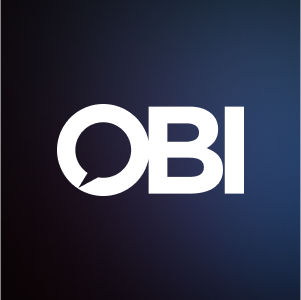Demystifying Earned Media
Having a process for integrating your activities around creating content, sharing content, paying to place that content and getting others to talk about your content is critical for success — not just for PR firms or professionals, but for any brands and businesses wanting to generate awareness and build customer affinity around their products and services.
But what exactly do you call all those things? We remember it as the PESO model, which lists out paid, earned, shared and owned media.
Is “earned” media the same as media that’s “shared”? After all, they both often happen on social media channels and require the engagement of people outside the company. What if you pay for good reviews? And if those reviews are put on your site, do you own them? Do the lines between categories even matter if they all get you to the same place?
We hear you; let’s untangle earned media from its related terms.
A Deeper Look at Earned Media
Earned Media, Then
Earned media is what the PR industry is traditionally known for. Historically, it entails getting your name or brand name mentioned positively in the news media or other influential publications and blogs.
These placements are earned because you’ve worked hard to build relationships with journalists in your local media to be aware of your company’s strengths and/or the skill and expertise of its leaders.
Earned Media, Now
As with all things, technology has changed the way you should go about trying to get others to talk about your content.
Putting your product and services in front of your ideal audiences as often and as much as possible means getting not just journalists and trade publications to see your value but also bloggers, editors and content creators whose audiences align with your own.
More than 75% of consumers trust online reviews and make a point to read them before converting. What your clients post on Google about their experience with your business is crucial — and so is what they post on social media.
When someone has a great opinion of your brand and talks about it, you’ve earned their testimonial. Word-of-mouth has always been a powerful source of warm leads, but the internet has amplified its importance. Instead of someone telling their neighbor in passing, someone can tell hundreds or thousands of people at once. And when it’s published online, other people can find that same opinion weeks or years later.
Of course, earned media placements aren’t just important for amplifying your message, they also help determine how people find you online and therefore even know that you exist.
Earned Media and SEO
Search Engine Results Pages (SERPs)
SERPs, or search engine results pages, are what people see when they do a Google search. Getting on the first page — and if possible, in the top four or five results — is critical for being found by people searching for your business or what you do or sell online.
Google looks at many factors when determining which results to display for any given search query. Their goal is to return the most relevant, useful and satisfying results to searchers. Let’s say you search for “rock and roll hall of fame,” and Google returns a list of the top ten best rock tumblers. You’d be frustrated — and probably surprised, because it’s usually pretty good at analyzing the relevance of content to search terms, which is why that’s the most widely understood aspect of search engine optimization.
When Google is deciding whether to put your blog post or website in the list of SERPs for a given query, it’s looking at the relevance of your content to the search term the person entered, but it’s also considering your authority. It wants to return results from sites that can speak authoritatively about the search topic, not random nobodies who aren’t experts in the field.
There are two main ways to establish that authority:
- Create high-quality content, consistently.
- Generate backlinks to your website from other authoritative sites (preferably a mixture of ones that have higher and lower domain authority scores than you do).
Earned media can be a huge boost for backlinks, through a mix of coverage and contributed content.
Coverage and Publicity
Coverage of your brand, its executives and the products/services you offer in news media, on blogs and on other industry publications’ websites can drastically improve the likelihood that potential customers can find you.
Publicity contributes to their awareness of your brand, but being published online also helps your SERP standings by showing search engines that you’re a legitimate company that gets good reviews.
Contributed Content
The same is true for any guest posts you write for other websites which link back to your company. If you earn a place on their site and can link back to your own, that’s another point in your favor regarding search engines.
Putting Your Content in Front of the Right People
In the past, you wanted to put your pitch in front of as wide an audience as possible. But that strategy was for the days when broadcast messaging reigned, before the Internet changed everything.
Today, you should be more concerned about getting your messages (including those which count as earned media) in front of the right people, which may not necessarily be the most people.
Metrics
Ask yourself what matters more — impressions or sales? Big numbers generate impressions, but impressions don’t buy products. The goal of your earned media efforts should be to generate qualified leads and ultimately, sales. That requires putting the right content in front of the right people at the right time. You need research to help you do that.
Let research inform your earned media activities. Put time into identifying exactly which bloggers, influencers, reporters and editors manage content for publications that your customer personas read.
Set up Google alerts for your primary keywords and research the reporters and publications writing about those keywords. Search Google every day for your desired keywords, refining your results to “News” entries to see what stories are being written about the keyword and keyword phrases you’re targeting.
As you find people writing about these topics, connect with them. Follow them on social media and share their stories (when they’re relevant to your brand and content). Try to build relationships with them. When you think you have a relevant topic in their area of interest or expertise, reach out.
Start by writing a personal pitch to show how you can be a resource to them. Share links to relevant content you’ve created on the matter. Most of all, be professional, not promotional about it – nobody wants to work with brands that feel like con artists.
You won’t have to wonder if your efforts are working. You’ll know they are because you’ll see the results.
Integrate Your Strategic Marketing
You’ll notice that we don’t make claims about whether earned media is the best possible strategy to shoot for. That’s because the best strategy is to integrate everything in the PESO model into your marketing plan.
Owned, shared, paid and earned media all have synergy. Earned media can have massive amounts of influence on your reputation, but it requires your owned media to be remarkable (literally).
Want to get people posting rave reviews about your brand? We can get you started. Reach out today to learn more about how to get customers talking.




